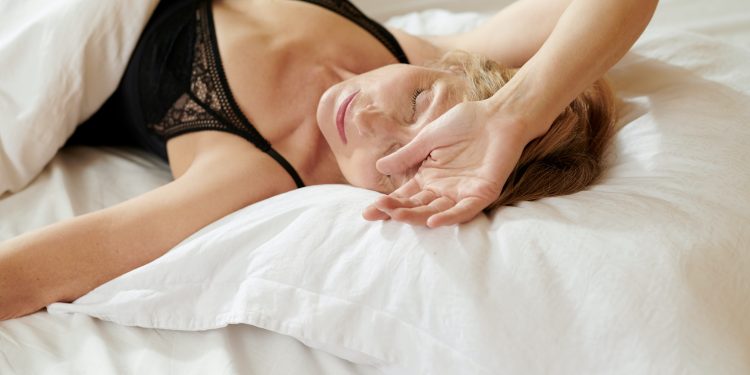Most people feel uncomfortable sleeping in hot temperatures, and for good reasons. Temperature is directly related to your quality of sleep, so finding a happy medium for your body to settle into and snooze is crucial to getting a good night’s rest. That’s why many people toss and turn during the sweltering hot months, but they also struggle to fall asleep when temperatures dip below freezing.
When you get ready for bed and settle in, your body releases melatonin, which causes your body temperature to drop by one to two degrees. It accelerates the onset of sleep, priming you to fall asleep as soon as you hit the pillow. Interestingly, if you don’t sleep, your body cannot thermoregulate properly; conversely, if the temperature is at uncomfortable temperatures, you can’t fall asleep, either. This direct relationship with each other is essential for enjoying a high quality of sleep, so here’s what you need to know about it:
What Happens to Your Body Temperature When You Sleep
Your peripheral skin temperature—also known as ‘Tsk’—is responsible for decreasing your threshold core temperature or Tcor. It essentially cools your body before you sleep by widening your blood vessels since it controls the blood flow to the skin, allowing more heated blood to flow from the core and release it to the environment. The process of blood vessels widening is called vasodilation, which encourages the rapid onset of sleep by promoting melatonin release. A cooler body temperature also helps regulate your heart rate, helping you settle in comfortably to recharge.
Setting the Ideal Temperature in the Bedroom
If you have a hard time falling asleep at night, it may indicate that your bedroom is too warm or cold, which means your body needs the environment to adjust its temperature so you can sleep properly. Although the ideal temperature often varies according to personal preference, scientific research estimates it to be between 60 to 80 degrees Fahrenheit.
Since humans have evolved tremendously throughout thousands of years, our neurological mechanisms allow us to regulate our own temperature even when the room is a bit too hot or cold for your liking. However, it’s highly recommended to help your body fall asleep better by setting the room to the right temperature by opening a window if it’s too hot or turning the thermostat up if it feels frigid. You can even adjust the thickness of your comfort or duvet or opt for a mattress that regulates your body temperature.
Finding a Breathable Mattress to Sleep In
Mattresses have developed immensely as they now offer a wide range of benefits, providing the most optimal conditions to encourage falling asleep quickly. In fact, today’s mattresses are so comfortable that many people struggle to decide between a Sleep Number bed vs. a Tempurpedic one since they are easily among the best mattress brands out there.
However, Sleep Number beds are known for their breathability and thermoregulation capabilities, helping you sleep better at night. You may be wondering which Sleep Number bed is the best, especially concerning temperature regulation, so you’ll want to start with their Innovation series. It features advanced temperature balancing comfort layers, absorbing excess heat, and releasing it to keep you cool as you snooze. It also uses Smart 3D fabric, which is up to 50 percent more breathable, providing you with a cooler sleep surface.
Conclusion
There’s more to the relationship between temperature and sleep than meets the eye, but understanding the dynamics is the key ingredient to enjoying a full night’s rest. When your body properly recharges, you’ll experience more alertness, improved performance, and overall better health. By investing in a breathable mattress, you’ll fall asleep much faster than before.
Sleep Number Beds regularly uploads everything you need to know about adjustable mattresses, particularly the best Sleep Number beds and mattresses. By reading our articles, you’ll have all the information necessary to buy the perfect mattress for you. Check out the rest of our guides today!


